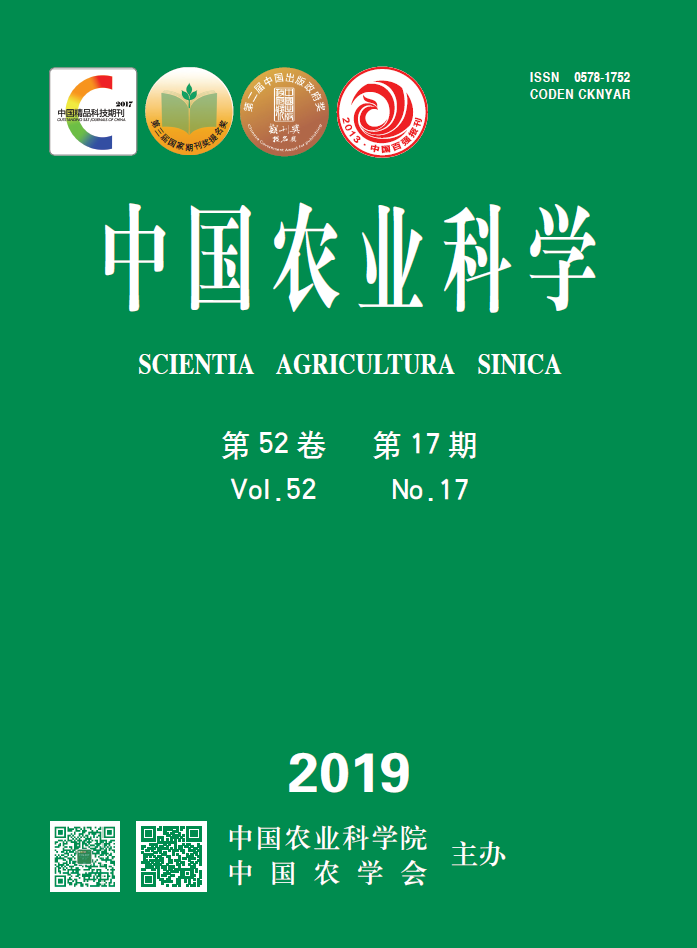【Objective】 Maize ear rot, stalk rot and sheath rot are the three common Fusarium diseases in maize producing areas in China, and there is a trend of serious mixing occurrence in recent years. The main pathogens of the three major diseases are F. verticillioides, F. graminearum and F. proliferatum. Planting resistant varieties is the most economical and effective method to control this kind of diseases. The objective of this study is to screen out the maize resistant germplasms to ear rot, stalk rot and sheath rot, and to provide references for scientific breeding and rational layout of maize varieties.【Method】 Sixteen common inbred lines of maize including B73, B37, Zheng 58, Chang 7-2, Qi 319 and so on were selected to inoculate F. verticillioides, F. graminearum, and F. proliferatum on maize ears, stalks and sheaths, respectively. The suspension spores of F. verticillioides were injected into healthy maize ears along the filament channel with a continuous syringe at silk stage. The stem of the first aboveground segment of healthy maize was pinned and then injected with the suspension spores of F. graminearum. The suspension spores of F. proliferatum were injected into the sheath of the aboveground 2-5 internodes along the base of healthy maize sheath. Sterile water was used as control. In 2016 and 2018, experiments were conducted in fields to evaluate the disease index of ear rot, sheath rot and the lesion areas of stalk rot, so as to evaluate the resistance level to the ear rot, stalk rot and sheath rot.【Result】 The tested inbred lines Ji 853, OH43 and X178 were moderate resistance to ear rot, 13 of the tested inbred lines such as B73, B37, PH6WC, Ye 478, Zheng 58, 9058, Chang 7-2, Xun 928, Mo17, A619, PH4CV, Qi 319 and 13-1077 were sensitivity or high sensitivity to ear rot; 8 of the tested inbred lines including Qi 319, PH4CV, Mo17, 9058, B37, B73, Chang 7-2 and 13-1077 were moderate resistance and high resistance to stalk rot, 7 of the tested inbred lines such as Zheng 58, Ye 478, PH6WC, Xun 928, Ji 853, A619 and OH43 were sensitivity or high sensitivity to stalk rot; 15 of the tested inbred lines such as B73, B37, Zheng 58, Ye 478, PH6WC, 9058, Chang 7-2, Ji 853, Xun 928, Mo17, A619, PH4CV, OH43, Qi 319 and 13-1077 were moderate resistance or resistance to sheath rot. According to the population of 16 inbred lines, Reid group was susceptible to ear rot. Lancaster group and Tangsipingtou group were resistant to sheath rot. The resistant levels of other groups to Fusarium diseases dispersed to a large extent, and there was no obvious regularity.【Conclusion】 The tested inbred lines Ji 853 and OH43 showed moderate resistance or resistance to sheath rot and ear rot, 8 of the tested inbred lines including Qi 319, PH4CV, Mo17, 9058, B37, B73, Chang 7-2 and 13-1077 showed moderate resistance, resistance or high resistance to sheath rot and stalk rot, but the materials with good resistance to all three diseases had not yet been screened, and other germplasm resources needed to be further screened.









